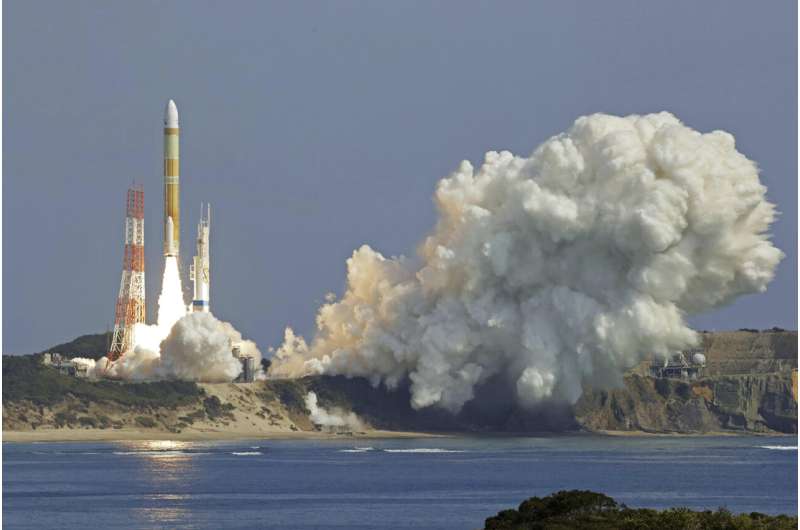JAXA officials apologized for the failure, and said it sent a command to destroy the rocket about 14 minutes after liftoff as there was no hope for it to complete its mission.
Yasuhiro Funo, JAXA director for launch implementation, said the second stage and its payload fell into the deep sea off the eastern coast of the Philippines. He said the rocket, which was not going to enter the targeted orbit while carrying a lot of fuel, was unsafe and had to be destroyed.
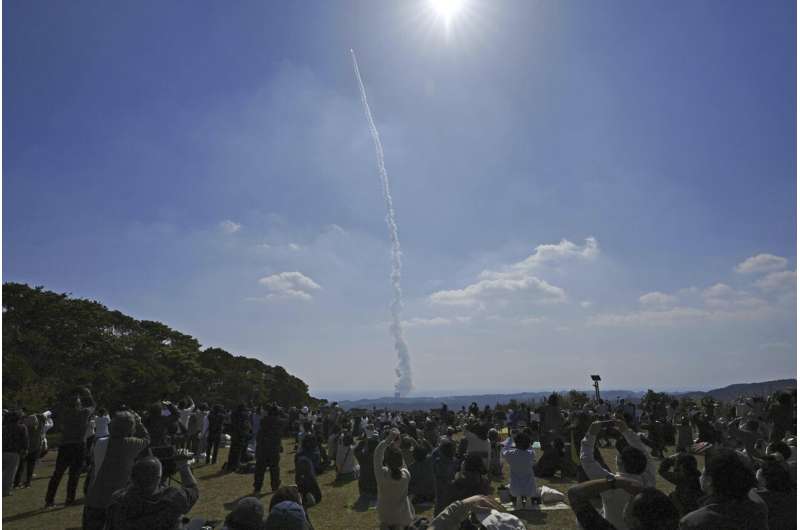
No damages or injuries were reported from the destruction of the rocket or its falling debris.
The rocket was carrying an Advanced Land Observation Satellite, or ALOS-3, tasked primarily with Earth observation and data collection for disaster response and mapmaking, and an experimental infrared sensor developed by the Defense Ministry that can monitor military activity including missile launches.
There is no plan for an alternative satellite launch to replace the earlier generation of ALOS, said Katsuhiko Hara, Education, Culture, Sports, Science and Technology minister. He did not say if or how the delay could affect disaster and missile detection capability.
The failure is the second in six months since a smaller Epsilon-series solid-fueled rocket designed to launch scientific satellites failed in October.
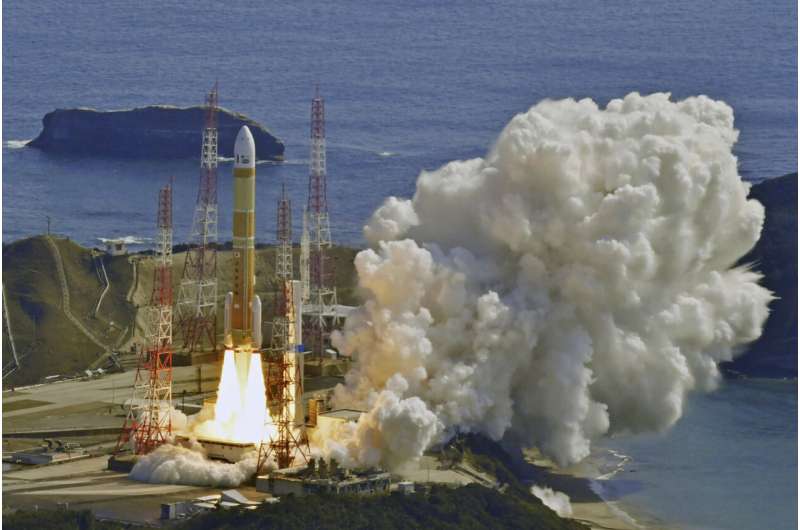
The H3 launch had also been held up more than two years because of an engine development delay. During a launch attempt in February, an electrical glitch after the main engine ignition aborted the launch just before its liftoff and narrowly saved the rocket.
Further delay is expected, but JAXA officials said analyzing the malfunction and rebuilding trust comes first.
"Our top priority is to do everything we can to find the cause and regain the trust in our rockets," said JAXA President Hiroshi Yamakawa at a joint news conference. "We need to figure out what we should do to successfully achieve the next launch."
Yamakawa said global competitiveness is still important. "Delays and additional costs are both burdens, but we will achieve international overall competitiveness from the perspectives of cost and user friendliness in delivering satellites."
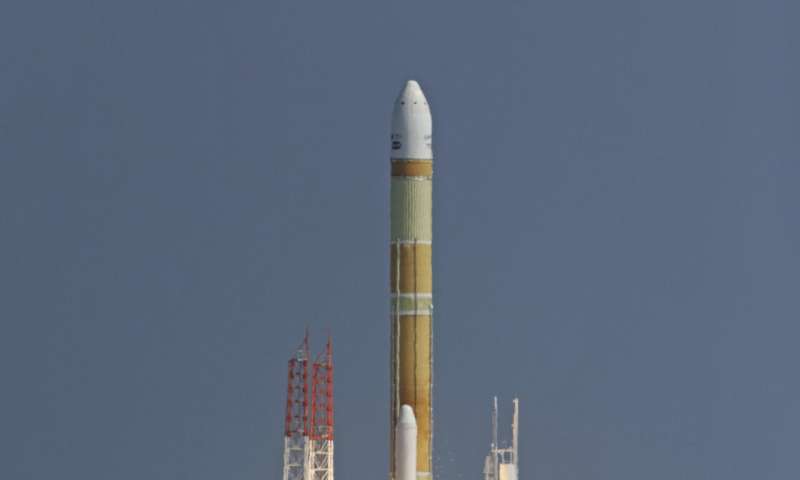
An H3 rocket lifts off from Tanegashima Space Center in Kagoshima, southern Japan Tuesday, March 7, 2023. Credit: Kyodo News via AP 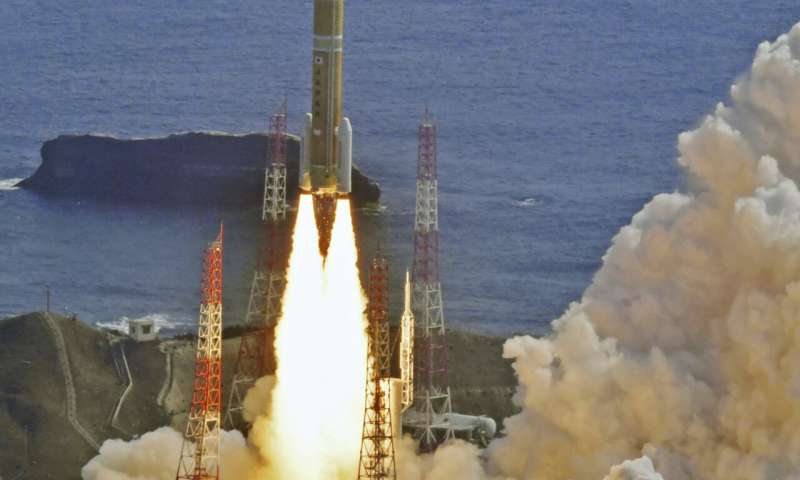
An H3 rocket lifts off from Tanegashima Space Center in Kagoshima, southern Japan Tuesday, March 7, 2023. Japan’s space agency intentionally destroyed the H3 rocket moments into its launch Tuesday after the ignition for the second stage of the country's first new rocket series in more than two decades failed. Credit: Kyodo News via AP 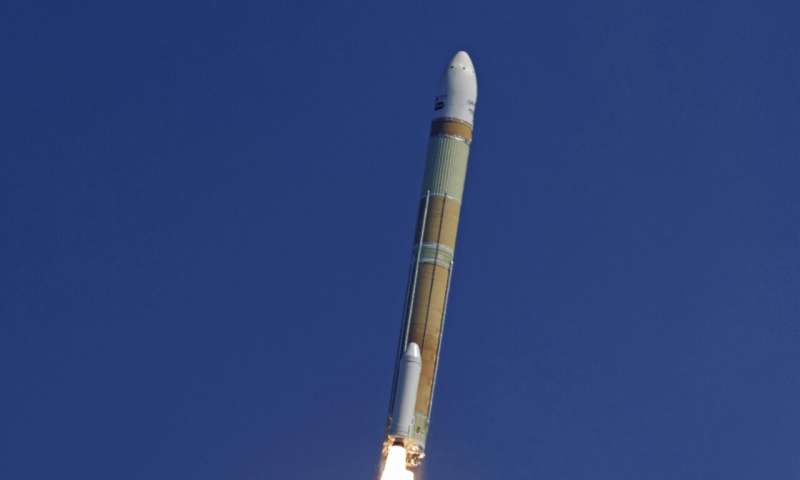
An H3 rocket is launched from Tanegashima Space Center in Kagoshima, southern Japan Tuesday, March 7, 2023. Japan’s space agency intentionally destroyed the H3 rocket moments into its launch Tuesday after the ignition for the second stage of the country's first new rocket series in more than two decades failed. Credit: Kyodo News via AP
The H3 rocket—Japan's first new series in more than 22 years—was developed at a cost of 200 billion yen ($1.47 billion) by JAXA and Mitsubishi Heavy Industries as a successor to Japan's H-2A rocket, which is due to retire after its upcoming 50th launch.
The H3, about 60 meters (196 feet) long, can carry larger payloads than the 53-meter (174-foot) H-2A. But its launch cost has been slashed approximately in half to about 50 million yen ($368,000) by simplifying its design, manufacturing and operation in an effort to win more commercial launch customers. The hydrogen-fueled main engine is newly developed and uses fewer parts by altering the combustion method.
The space launch business has become increasing competitive, with major players including SpaceX and Arianespace.
© 2023 The Associated Press. All rights reserved. This material may not be published, broadcast, rewritten or redistributed without permission.



